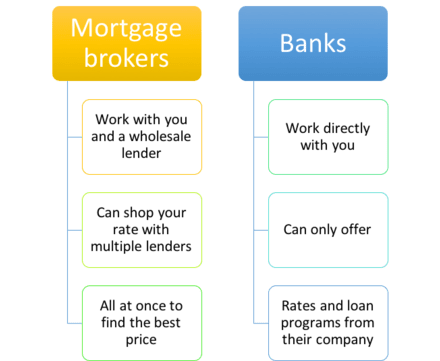A wise investor always considers a real estate investment’s potential benefits and risks before committing. There are many tools at their disposal for this kind of analysis which IRR and cap rates are an integral part. They have commonly used property investment metrics that projects should be run through before making any significant moves. Even lenders use them to decide if it is worth making out a loan on the commercial property.
While a review of IRR vs cap rates will reveal many similarities, it is important to know exactly what is considered in the calculations, what the calculations represent, and why they are important. The decision should be made using both long and short-term factors because the ability to project future earnings helps determine if the project will be profitable.
This article is meant to familiarize with and comprehend how they are calculated and differentiate IRR vs cap rate. You should be able to use these tools to evaluate a project’s merits and estimate your potential return on investment.
The concepts behind them are similar and often overlap, but the distinction is critical for the application. Each has its insight with its pros and cons, as we are about to find out.
Capitalization Rate
The cap rate measures the expected returns from an investment concerning the value of the investment made. This ratio compares properties when you have several options to choose from.
With all other factors remaining constant, it is prudent to go for real estate with the highest cap rate. A property’s cap rate is the product of its annual net income divided by its value or acquisition cost.
Capitalization Rate = Net Operating Income (NOI)/Purchase Price
To put this into perspective, if the property’s net operating income for the sample year is $100,000 and it is going for $1,000,000, its cap rate is 10%. This means if you purchase the property, you will expect to recoup 10% of what you spent within the year. This simple ratio makes a presumption that it was an all-cash transaction, as mortgage payments and varying interest rates impact the net operating income differently.
Going by this, the higher the offer price, the lower the net operating income, and the lower the property’s cap rate. This is how two similar properties in the same neighborhood will have significantly disconnected projections of return on investment.
The NOI is the property’s rental income, less operational expenses like property management and administration expenses, marketing costs, utilities, insurance, maintenance costs, and any other expenses you will incur for the duration. You should also deduct vacancies if the property is not occupied to capacity for the projection to be realistic.
The prevailing market conditions also affect the capitalization rate; in a sellers’ market, demand for scarce houses pushes the prices higher due to competition among bidders. The higher purchase prices lower investment capitalization ability. This is probably not the best time to invest in real estate if the return on investment is your main motivator.
Internal Rates of Return (IRR)
This is another way of projecting the potential returns from an investment opportunity. It factors in earning projections for the entire period the investor will hold on to the asset, including earnings from its eventual sale.
The returns are captured annually and may vary yearly over the holding period. It considers possible fluctuations in operating income, property value, and debt service.
In short, the IRR is the percentage rate of earning on an investment during the specific timeframe it is invested, assuming the cash flows during this period are reinvested at the same rate. Its calculation is more complicated than the cap rate as it has more variables, but these variables make the IRR more revealing than the cap rate.
To give it context, let’s assume an investor intends to hold onto a property for five years, during which time they will be getting an income from it. The net income received during the first year will earn interest for the next four years, what is received for the second year earns interest for the next three years, and so on. Summing up the interests earned from each year’s earnings over the holding period gives you the period’s IRR.
IRR is often used along with the project’s net present value (NPV) in capital budgeting and investment planning. The net present value is a way to balance the present value of all future cash flows the project will generate against its starting capital investment. It shows how much a project is anticipated to gain or lose in today’s cash. This helps in accounting for the time value of money so you can determine if it is a worthy investment.
IRR is the interest or discount required for the project to break even, or in other words, for the NPV to be at zero. A negative NPV means the projections show that the returns from the investment are likely to fall short of the cost of capital, which means you expect a loss; therefore, the project is not viable.
A positive NPV means the project will create value and is worth pursuing.
You also need to know the actual rate of return so that you can compare the investment property with any other with a positive NPV. This way, you can choose the one that offers better returns on your investment.
Pro Tip: A Higher IRR Doesn’t Always Mean Higher Returns
Because IRR factors in the time value of money, calculations yield higher rates of return for short-term projects than long-term projects. The results are higher the sooner you expect the returns from your investment.
This means a project with a lower IRR might yield higher returns, albeit at a later point in time. A good example is using two properties, A and B, where property A is flipped immediately after it is bought, and property B is retained as a rental property for a while before eventually being sold off.
Property A might have a higher IRR because the proceeds are realized immediately, but property B will have rental income on top of the selling price, which makes its total income higher. There are other factors to consider, like the higher risk associated with longer periods—the market has a wider window of fluctuation, and so does the interest rate if it was financed.
Application of IRR vs Cap Rate
Cap rates can vary depending on the class of assets, their location, quality market timing, and many other factors. As we established earlier, they have an inverse relation with the property value.
High cap rates—18% and above—are considered high-risk opportunities because they often represent a market anomaly with exaggerated returns or undervalued properties. The market can correct itself anytime.
The IRR considers figures over a longer period and is more likely to capture the true market values. The cap rate calculation doesn’t factor in debt and always works with the assumption that the property is purchased in cash. This makes it a great metric for comparing different properties, as mortgage costs vary depending on the lender, credit ratings, market forces, and other variables that might skew the figures.
IRR will factor in mortgage repayments, which means you can’t tell if your findings are based on the property’s merits. Including debt payments is not necessarily a bad idea, though. How the property is financed has a bearing on the final returns.
Cap rates will show the value potential of the property at a specific point in time, while IRR provides the overall view of the investment’s lifespan.
Bottom Line
Real estate investments require a thorough understanding of IRR vs cap rate dynamics if you are to make informed comparisons between different real estate projects, understand property pricing, and use realistic expectations for your planning.
Each of these metrics has its strengths and limitations, making it wise to use both for extra peace of mind, especially when volatile markets bring about higher risk.




